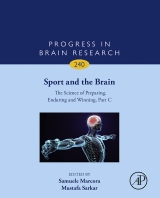Staiano W1, Bosio A2, De Morree HM3, Rampinini E2, Marcora S4.
1, Department of Physical Education and Sport, University of Valencia, Valencia, Spain; 2, Human Performance Laboratory, Mapei Sport Research Centre, Olgiate Olona, VA, Italy; 3, Personal Health Department Philips Research, Eindhoven, The Netherlands; 4, School of Sport and Exercise Sciences, University of Kent at Medway, Chatham, United Kingdom; Department of Biomedical and NeuroMotor Sciences (DiBiNeM), University of Bologna, Bologna, Italy.

ABSTRACT
The capacity to sustain high-intensity aerobic exercise is essential for endurance performance. Therefore, it is important to understand what is the factor limiting time to exhaustion (TTE) in healthy and fit adults. In Study 1, maximal voluntary cycling power (MVCP) was measured in 11 volunteers before and immediately after a high-intensity TTE test on cycle ergometer. Cadence was 60 rpm in both the MVCP and TTE tests. Despite a 35% loss in MVCP, power produced during the final MVCP test (mean ± SD 469 ± 111 W) was significantly higher than the power required by the TTE test (269 ± 55 W) (P < 0.001). In Study 2, 12 participants performed a cold pressor test (CPT) to the limit of tolerance followed by a high-intensity TTE test on cycle ergometer. Ratings of pain unpleasantness (RPU) during the TTE test were anchored to the unpleasantness of pain experienced during the CPT. On average, the RPU was 9.7 ± 0.4 at completion of the CPT and 5.0 ± 0.9 at exhaustion during the TTE test. The difference between these two ratings of pain unpleasantness was statistically significant (P < 0.001). In both Studies 1 and 2, the slope of the rating of perceived exertion (RPE) during the TTE test correlated significantly with TTE (r = -0.75 and -0.83, P < 0.01). Results of this two-part investigation suggest that perception of effort, rather than severe locomotor muscle fatigue or intolerably unpleasant muscle pain, is the cardinal exercise stopper during high-intensity aerobic exercise.
Prog Brain Res. 2018
PMID: 30390830 DOI: 10.1016/bs.pbr.2018.09.012